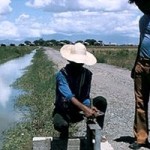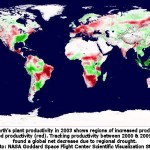
South Africa is committed to integrating environmental principles into the planning and organization of the 2010 FIFA World Cup™.
This follows a similar commitment of the 2006 FIFA World Cup™ in Germany, which resulted in the sensitization of the local and international football community to ecological issues and the securing of a long-term foundation for environmental concerns in national and international football. FIFA Local Organizing Committee has set up an Environmental Forum to plan, co-ordinate and monitor national Greening 2010 activities related to the stadia, fan parks, training grounds, accommodation facilities and the networks and amenities that service and connect them.
The Environmental Forum brings together representatives from the 2010 FIFA LOC, national and provincial government departments, the nine host cities, and United Nations agencies, amongst others. 2010 FIFA World Cup is being held between 11 June and 11 July 2010 in South Africa and it is the 19th FIFA World Cup, the first tournament to be hosted by a nation in Africa.
The 2010 FIFA World Cup is being staged at 10 venues across nine South African cities Johannesburg, Cape Town, Durban, Port Elizabeth, Nelspruit, Polokwane, Bloemfontein, Rustenburg and Pretoria. Johannesburg will be home to two World Cup stadiums – Soccer City and Ellis Park.
The 2010 Soccer World Cup presents an opportunity to enhance environmental sustainability for South Africa and its citizens. The aim is to reinforce the significance of environmentally responsible lifestyles within the context of the 2010 Soccer World Cup and the country’s economic and social development programmes.
Strategy
The 2010 FIFA World Cup™ will undoubtedly be a spectacular football event. This is an amazing opportunity for South Africa and the African continent to host an event of this magnitude and that in itself is a great achievement. The endeavour is to host a green 2010 FIFA World Cup™ and use this opportunity to raise awareness and to lay a foundation and set new and higher standards for greening future events in South Africa. Event greening has steadily gained momentum in the past decade. Host cities and event organizers continue to organize their events in such a manner that embraces the concept of sustainable development. This is done through successfully implementing initiatives, programmes and practices which have a minimum or neutral impact on the natural resource base.
The Department of Environmental Affairs and Tourism (DEAT), the lead government department responsible for promoting sustainable use and protection natural resources, has proudly committed to building partnerships and a coordinated network of actions that would ensure that it scores green in 2010.
South Africa strives to remain on top of global environmental management best practice through lessons learnt from the 2006 World Cup in Germany, the 2008 Beijing Olympic Games and new initiatives which combined, will deliver a 2010 event with a minimum ecological footprint. FIFA’s mission statement for the 2010 World Cup includes three key messages “Develop the Game”, “Touch the World” and “Build a Better Future”. South Africa’s Greening 2010 programme will, therefore, be a demonstration and contribution to the quest to raise awareness, minimize waste, diversify and use energy efficiently, consume water sparingly, compensate our carbon footprint, practice responsible tourism, and construct our infrastructure with future generations in mind. These greening initiatives look beyond the actual time-frame of the sporting activity and include concerns for post-event, environmental, social and economic impact of the event on the immediate and extended environment.
South Africa is committed to greening the 2010 World Cup by focusing on the following pillars: conservation of water and energy, waste management, transport and mobility and carbon offsetting.
Energy
South Africa’s electricity utility, Eskom is considering using renewable energy to supply some of the needs of the 2010 Soccer World Cup. The city of Cape Town would get green energy from the Darling Wind Farm; Ethekwini Metro, Durban would use biogas from its landfill sites; and, Pretoria would use biogas from the Ekurhuleni Metro. The Central Energy Fund and Eskom have prioritized the rollout of energy-efficient lighting for residential and street lighting in all nine host cities, and other areas in the Country. Other initiatives include solar-powered traffic lights and cameras on freeways.
Waste Management
The Local Organizing Committee is working on a system of separating waste that would be made uniform throughout the host cities. All host cities are encouraged to allocate adequate budget to separating waste. In addition, the LOC for the 2010 FIFA World Cup will encourage the FIFA official affiliates to implement waste avoidance and reduction mechanisms by minimize packaging and reducing waste generation, recycling waste and thus reducing waste to landfill.
Transport and Mobility
The Global Environment Facility (GEF) plans to help South Africa with the “greening” of its public transport system ahead of the 2010 Football World Cup. The GEF is exploring ways of ensuring sustainable transport initiatives that deliver greenhouse gas reductions above and beyond those currently planed in a bid to demonstrate the benefits of alternative fuels and green technologies like bio-diesel, bio-ethanol and fuel cells. It would also be looking at cycling and pedestrian routes that could feed into bus networks, offering attractive alternatives to the private car.
Carbon Neutrality
According to the Feasibility Study and carbon footprint calculation towards a Carbon Neutral 2010 World Cup, The FIFA 2010 World Cup will have the largest carbon footprint of any major event with a goal to be “climate neutral”. The estimate carbon footprint of the FIFA 2010 World Cup is more than 850,000 tonnes of carbon dioxide equivalent (tCO2e), with more 1,400,000 tCO2e contribute by international travel, to produce an estimate of 2,171, 000 tonnes of carbon emissions. International travel is more than 65% of the carbon footprint, following by intercity travel and energy use in accommodation at 17% and 13%.
The National Greening 2010 Framework and Minimum Environmental Standards for Green Goal 2010 include many measures that have the potential to reduce the carbon footprint. The measures, however, only impact the emission from stadium and precinct energy use, and local transportation, which in total only make up 6% of the domestic carbon footprint. Offsetting the domestic carbon footprint of the 2010 World Cup could cost between $6.8 and 12.0 million, while offsetting international travel would, on its own, be double this amount.
To maximize the contribution to public awareness, a few of the energy efficiency measures in order to reduce the carbon footprint, will be given visibility during the FIFA 2010 World Cup. The South African Government is working with the UN Development Programme on an initiative involving carbon offsets for the World Cup and on securing donor funding to implement this. The 2010 FIFA Soccer World Cup™ offers South Africa a unique opportunity to demonstrate to the world its commitment to responsible environmental management, whilst improving the living environment and livelihoods of South Africa’s people.
The event offers important opportunities to showcase how we can respond to the challenges facing our region and our planet, and what each of us can do differently. Equally, greening programmes developed in the context of the 2010 World Cup™ will build South Africa’s experience in hosting events in environmentally responsible ways, and contribute to future expanded greening programmes across the country and as a stepping stone toward greening of events for the region and the sporting world more broadly.
Source: UNEP.












